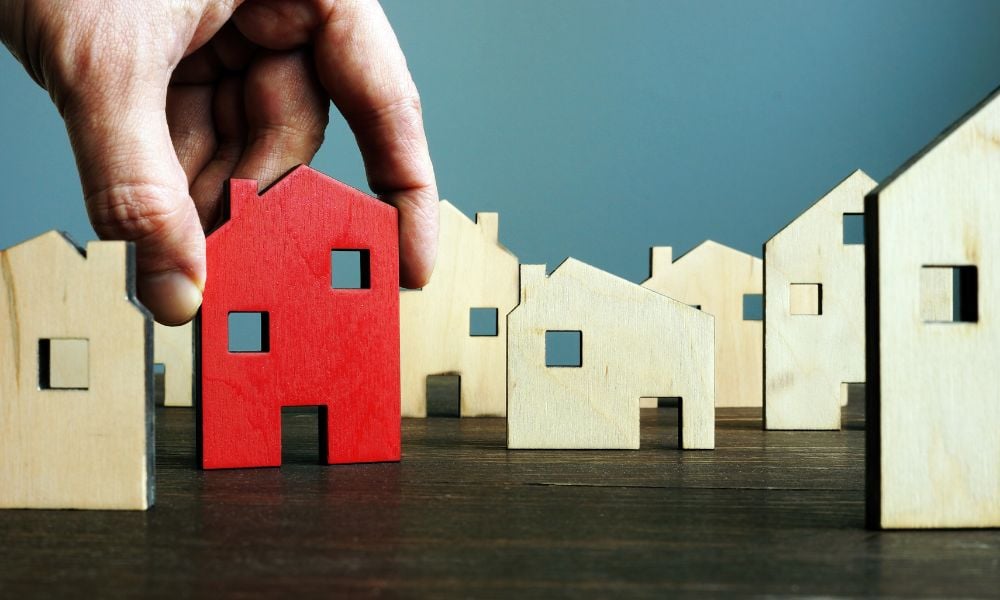Single-family housing starts drop to lowest total since July 2024

Privately owned housing starts declined by 11.4% from February to March, fueled by increasing materials costs and tariff uncertainty.
According to the US Department of Housing and Urban Development (HUD) and the US Census Bureau, privately owned housing starts in March were 1.324 million, well below the February total of 1.459 million.
The news was worse for single-family housing starts. In March, there were 940,000 single-family housing starts, 14.2% below the February total of 1.096 million.
The 940,000 single-family housing starts are the lowest total since there were 861,000 in July 2024. It’s only the second month with a total below one million since August 2024.
Odeta Kushi, First America deputy chief economist, notes that the total number of privately owned housing starts was expected to be 1.45 million. She said uncertainty caused by the Trump administration’s tariffs is leading to the lackluster numbers.
“Builders pull back more than expected amid rising tariff uncertainty, as housing starts slump well below consensus expectations,” Kushi said. “Builders face persistent supply-side and affordability challenges, from higher material costs to a shortage of skilled labor. Residential building material costs are still more than 40% higher than pre-pandemic levels, making construction more expensive.”
Kushi is concerned that if the tariffs continue, the price of new homes will continue to rise.
“Recent tariff actions could push costs even higher, with builders estimating an additional $10,900 per home,” she said. “If these tariffs persist, builders will have no choice but to pass on the costs to consumers, who are already struggling with housing affordability.”
Rising costs leading to negative builder sentiment
The numbers align with a survey released by the National Association of Home Builders (NAHB) on Wednesday.
Builder confidence in the market for newly built single-family homes increased from 39 to 40 in March. While the slight increase was due to a decline in mortgage rates in March, uncertainty due to the tariffs and their effect is hindering overall confidence.
“The recent dip in mortgage rates may have pushed some buyers off the fence in March, helping builders with sales activity,” said NAHB chairman Buddy Hughes in a press release. “At the same time, builders have expressed growing uncertainty over market conditions as tariffs have increased price volatility for building materials at a time when the industry continues to grapple with labor shortages and a lack of buildable lots.”
Kushi agreed that builder remains negative due to the rising costs of construction.
“The decline in starts aligns with builder sentiment,” Kushi said. “While overall builder sentiment inched up slightly in April, moving from 39 to 40, it remains in negative territory.”
Builders aren’t confident about where the market is heading over the next half year.
“Optimism about single-family sales for the next six months fell by four points to 43, marking the lowest level since November 2023,” Kushi said.”
Housing completion numbers also dropped in March. There were 1.549 million privately-owned housing completions in the month, 2.1% below February’s total. However, it was a 3.9 percent increase from March 2024.
Single-family home completions in the month were at 1.029 million, a 0.9% increase over the previous month’s total of 1.020 million.
Overall permits up, but single-family permits down
Privately-owned housing unit building permits were at 1.482 million, up by 1.6% from February. This was mostly driven by multi-family permits, which increased by 10% over the previous month.
Single-family permits were at 978,000, 2% below February’s number.
“The slower pace of single-family permits suggests a reduced rate of groundbreaking in the upcoming months, due to higher inventory levels in key markets and ongoing challenges with costs and affordability,” Kushi said.
Affordability issues were highlighted in the latest Mortgage Bankers Association (MBA) survey, which showed a decline in mortgage applications overall but an increase in adjustable-rate mortgage (ARM) applications. MBA president and CEO Bob Broeksmit believes the surge in ARM applications shows buyers are looking for ways to improve affordability.
Amid trade war tensions, US mortgage activity fell as rates climbed. Adjustable-rate mortgage applications rose to their highest share since 2022, signaling borrower shifts amid rising costs. https://t.co/jRWLGHVjff
— Mortgage Professional America Magazine (@MPAMagazineUS) April 16, 2025
“Mortgage applications declined 8% last week as buyers and sellers grapple with rate volatility and economic uncertainty,” Broeksmit said. “While overall activity was down, the ARM share rose to its highest level in 17 months, indicating that borrowers are seeking alternative options for navigating affordability concerns in home purchases.”
Stay updated with the freshest mortgage news. Get exclusive interviews, breaking news, and industry events in your inbox, and always be the first to know by subscribing to our FREE daily newsletter.



